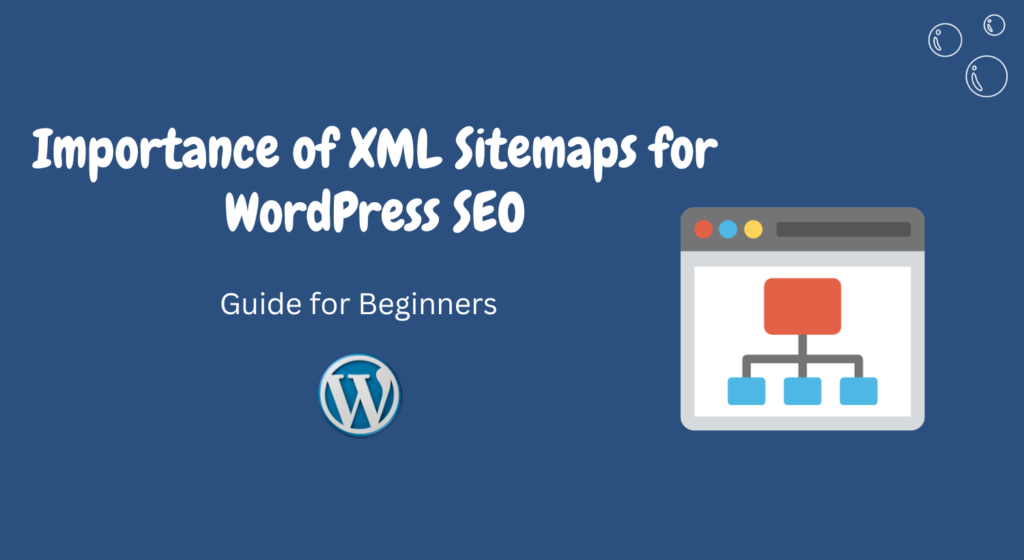When it comes to enhancing your website’s visibility on search engines like Google, SEO (Search Engine Optimization) strategies are your trusty tools.
Among these, XML sitemaps might seem like unsung heroes, often overshadowed by more attention-grabbing tactics such as keyword research and backlink building.
However, underestimating the power of XML sitemaps in boosting your WordPress site’s SEO performance could be a costly mistake.
In this comprehensive guide, we’ll delve deep into the world of XML sitemaps and why they should be an indispensable part of your SEO arsenal.
Understanding XML Sitemaps
Let’s start by getting a clear understanding of what XML sitemaps are and how they function within the realm of SEO.
What is an XML Sitemap?
An XML sitemap is essentially a roadmap for search engines like Google.
It’s a file that provides these search engine giants with a structured list of all the pages on your website.
In simpler terms, it’s like a detailed index or table of contents for your website, making it easier for search engine bots to navigate and index your site more efficiently.
Enhancing Crawlability
Now that we know what XML sitemaps are, let’s explore how they enhance the crawlability of your website.
Facilitating Search Engine Crawling
One of the primary roles of XML sitemaps is to make the job of search engine crawlers considerably easier.
When you create a new page or publish fresh content on your WordPress site, the XML sitemap promptly notifies search engines.
This means that your site stays up-to-date in their databases, and new content gets indexed faster.
Prioritizing Content
Another valuable feature of XML sitemaps is the ability to prioritize specific pages over others.
This comes in handy when you want to ensure that your most important pages receive more attention from search engines.
By indicating which pages should be crawled and indexed first, you can direct search engines’ focus where it matters most.
Improving SEO
Let’s dive into how XML sitemaps directly contribute to enhancing your site’s SEO.
Boosting Visibility
When search engines efficiently crawl and index all your web pages, your site’s overall visibility in search engine results pages (SERPs) receives a significant boost.
This means that your content is more likely to be seen by users when they search for related topics or keywords.
Better Keyword Optimization
XML sitemaps indirectly aid in keyword optimization. By ensuring your content is indexed promptly, they play a crucial role in improving your SEO efforts.
When users search for relevant keywords, your site is more likely to appear in search results, increasing the chances of attracting organic traffic.
Enhancing User Experience
A seamless user experience is not just beneficial for your website visitors but also for SEO. XML sitemaps play a role in this aspect as well.
Faster Indexing
With XML sitemaps in place, your website gets indexed faster, which means that users can find your content more quickly.
This not only improves user experience but also aligns with one of Google’s core ranking factors – page speed.
Reduced Bounce Rates
When users can access your content promptly, they are less likely to bounce back to the search results page.
This increased engagement can lead to lower bounce rates, a metric that search engines consider when ranking websites.
Lower bounce rates can positively impact your site’s search engine rankings.
XML Sitemaps and WordPress
WordPress Plugins
If you’re running your website on WordPress, you’re in luck. WordPress offers several plugins that simplify the process of creating and managing XML sitemaps.
Popular plugins like Yoast SEO and All in One SEO Pack enable WordPress users to generate sitemaps automatically. This means you don’t need to be a tech whiz to take advantage of XML sitemaps’ benefits.
Conclusion
In conclusion, XML sitemaps are not to be underestimated in the world of SEO, especially if you’re using WordPress.
They enhance crawlability, improve SEO, and boost user experience.
By ensuring that search engines efficiently discover and index your content, XML sitemaps play a crucial role in driving organic traffic to your WordPress website.
So, if you’re looking to elevate your WordPress SEO strategy, make sure to include XML sitemaps in your toolkit. They might just be the secret weapon you need to climb the ranks in search engine results.
FAQs
1. What is the main purpose of an XML sitemap?
An XML sitemap’s primary purpose is to provide search engines with a structured list of all the pages on your website, making it easier for them to crawl and index your content.
2. Are XML sitemaps necessary for small websites?
Yes, XML sitemaps are beneficial for websites of all sizes. They help search engines discover and index your content efficiently, regardless of your site’s scale.
3. Can XML sitemaps improve my site’s ranking in search results?
While XML sitemaps themselves don’t directly affect rankings, they can indirectly improve SEO by ensuring your content is promptly indexed, making it more accessible to users searching for relevant keywords.
4. How often should I update my XML sitemap?
You should update your XML sitemap whenever you add new content or make significant changes to your website. This ensures search engines are aware of the latest updates.
5. Which WordPress plugin is best for generating XML sitemaps?
Popular WordPress plugins like Yoast SEO and All in One SEO Pack are excellent choices for generating and managing XML sitemaps. Choose the one that suits your needs best.


